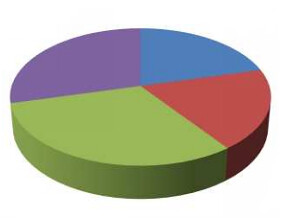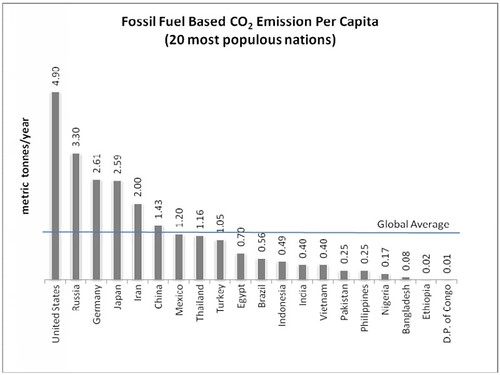What
are some of the most effective design strategies that I can put into practice
as a structural engineer?
Author: Frances Yang; Contributors:
Steve Buonopane, Lionel Lemay, Kate Simonen, Dirk Kestner
Design
for material efficiency
- Design that maximizes
efficient use of materials by not oversizing simply for ease and speed of
construction can reduce an estimated 5% to 7.4% of embodied carbon, excluding
operational energy. (Anderson 2009)
- On the other hand, designs
with unconventionally long spans tend to incur a 20% increase in embodied
carbon to the structure, or 10% to the whole building.(Arup 2010)
Design
for adaptability and deconstruction to enable future change in function
- This is highly dependent on
the assumptions of future use, but a simple estimate performed by Anderson and
Silman indicates that a 43% embodied carbon savings can be achieved if the
design doubles the structure’s lifespan. (Anderson 2009)
- The Deconstructable and
Reusable Composite Slab invented by a team of structural engineers enables
reusability of nearly all components. A
precast system set on reusable steel beams loses the efficiency of composite
action, and therefore demands approx. 30% more material. This new system retains composite action
while allowing for disassembly and reuse.
This concept won an award in the 2007 Lifecycle Building Challenge. (Webster
2007)
Figure
1: Deconstructable and Reusable Composite
Slab. Image © Simpson Gumpertz & Heger Inc.
Use
salvaged materials
- A design that uses 50%
salvaged steel sections showed a 34% decrease in embodied carbon. (Anderson
2009)
- NREL’s building in Colorado used 124 salvaged pipe
columns for 88% of the columns on the project.
A cradle-to-gate LCA on the columns found that when compared to equivalent manufactured pipe
columns, the use of salvaged columns reduced CO2 emissions by 65%. Total energy
was reduced by over 76 %. (Guggemos 2010)
Minimize
cement in the concrete
- Use of slag, a waste
material, to replace, 50% of conventional cement in the concrete alone resulted
in a 38% carbon savings for a concrete framed structure, and a 22% savings for
the same structure with a steel frame. (Anderson 2009)
- Another study for the
Concrete Centre confirms the previous findings by Anderson and states that specification
of cement content in concrete mixes can affect the embodied carbon of the
structure by +/-33%. (Arup 2010) Read
more on sources of variability in Q5.
- The lowest reduction cited
was in a study by MIT that found that increasing supplementary cementitious
material (SCM) substitution in a concrete building from 10% to 25% decreased
pre-use GWP by only 4.3%. The same study also found that Increasing SCM
substitution from 10% to 50% in ICF walls can reduce the pre-use GWP by 12% to
14%. (Ocshendorf 2010)
- Furthermore, Anderson found
that a design using both concrete containing 50% slag and 30% recycled
aggregate, in combination with 50% salvaged steel, can reduce embodied carbon
by an estimated 41% to 45% of embodied carbon. (Anderson 2009)
It should be noted that
these were based on a direct replacement of cement with SCM’s, such as slag or
fly ash, meaning the reduction in cement was equally the percent recycled
content. Structural engineers should be
careful when reviewing concrete mix submittals that the supplier has
effectively reduced the quantity of cement, not merely added SCMs to increase
recycled content.
Integrate
the structural system for optimal operational energy performance
See Q3 for these.
Design and promote resilient structures
Traditional LCA methodologies do not consider the risk of building life and life of building components to catastrophic hazards. Some methods of integrating LCA and damage assessment are under development. A broader need is for resilience-based design to make its way into standard practice. See Q9 for more on this topic.
Specify
more environmentally responsible sourcing
The issues around biogeniccarbon are complex. Life cycle
assessment does not currently capture all the metrics relevant to healthy
forests yet importance of responsibly managed forests is undeniable. See Q5 for more on biogenic carbon and
support behind responsible forest management.
In summary, there are
numerous design and specification strategies structural engineers can implement
to improve the environmental performance of buildings both upstream and
downstream of construction. See our
Bibliography, and particularly TheSustainable Design Guide for Structural Engineers, for more detail on how
to implement all of these.
References
Anderson, J., Silman, R.
(2009) “A Life Cycle Inventory of Structural Engineering Design Strategies for
Greenhouse Gas Reduction,” Structural Engineering International, March 2009
Issue.
Arup (2010) “Embodied Carbon
Study: Study of Commercial Office, Hospital and School buildings,” The Concrete
Centre, United Kingdom.
Guggemos, A.A., Plaut, M.;
Bergstrom, E.; Gotthelf, H.; and Haney, J. (2010) “Greening the Structural
Steel Process: A Case Study of the National Renewable Energy Laboratory,” Proceedings
of the 2010 Structures Congress, ASCE, Reston, Virginia.
Kestner, D., Goupil, J., and
Lorenz, E. (2010) Sustainability Guidelines for the Structural Engineer,
Sponsored by Sustainability Committee of the Structural Engineering Institute
of ASCE, Reston, VA: ASCE, 978-0-7844-1119-3.
Marceau, M., and VanGeem, M.
(2008) Comparison of the Life Cycle Assessments of an Insulating Concrete Form
House and a Wood Frame House, SN3041, Portland Cement Association, Skokie,
Illinois.
Masanet, E., Stadel, A., and
Gursel, P. (2012) Life-Cycle Evaluation
of Concrete Building Construction as a Strategy for Sustainable Cities, SN3119,
Portland Cement Association, Skokie, Illinois.
Ochsendorf, J. et al. (2010)
“Life Cycle Assessment (LCA) of Buildings Interim Report,” Concrete
Sustainability Hub, Massachusetts Institute of Technology, Cambridge,
Massachusetts.
Webster, M., Kestner, D.,
Parker, J., Waltham, M.. (2007)
“Deconstructalbe and Reusable Composite Slab,” Winners in the Building
Category: Component – Professional Unbuilt, Lifecycle Building Challenge
<http://www.lifecyclebuilding.org/2007.php>
Return to Top 10 Home

















